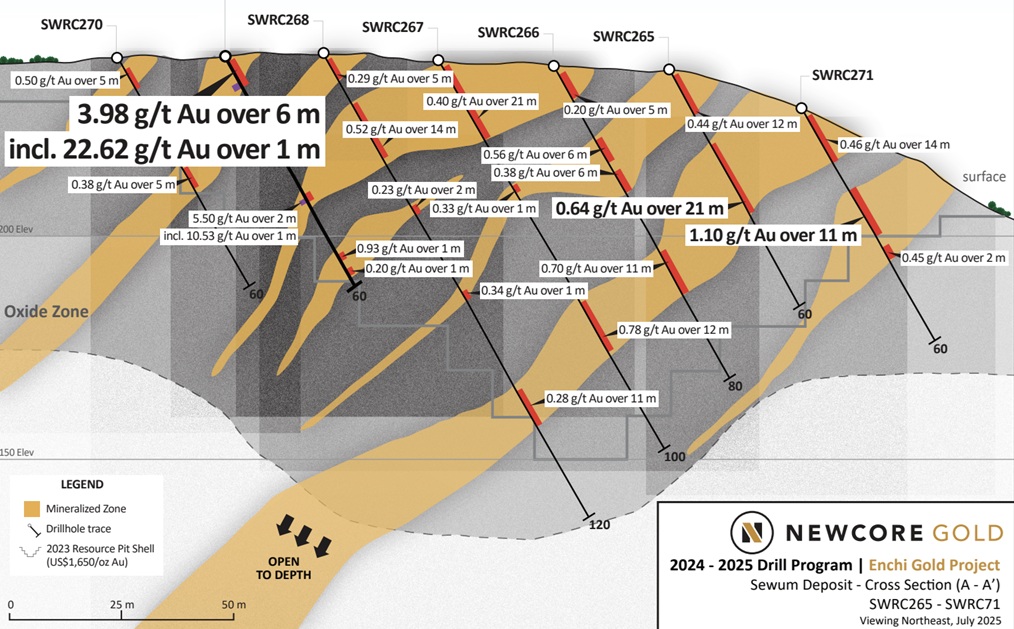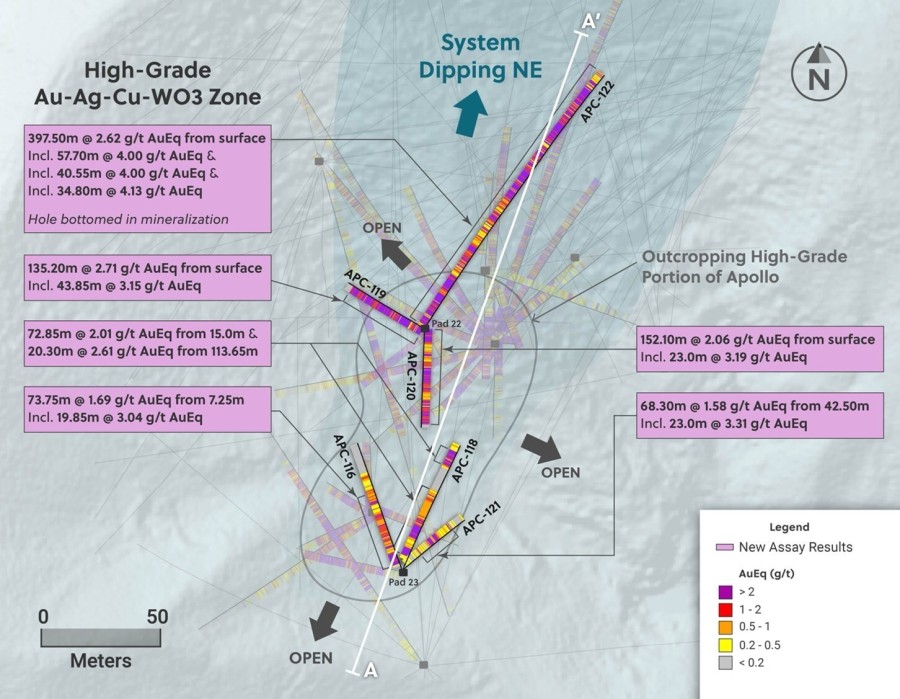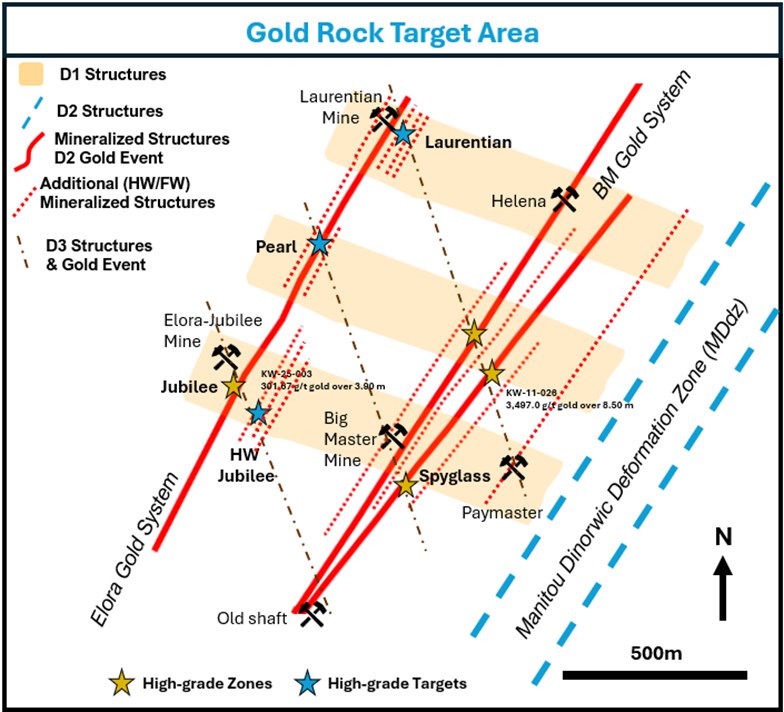TORONTO, Dec. 04, 2017 (GLOBE NEWSWIRE) -- First Cobalt Corp. (TSX-V:FCC) (ASX:FCC) (OTCQB:FTSSF) (the “Company”) is pleased to report high grade cobalt assays at the past producing Juno mine in Cobalt North, to the north of the Drummond mine. Surface sample results from the Juno mine in the Kerr Lake area suggest that a broad hydrothermal system may exist in the area.
Highlights
- Grab samples at the former Juno mine confirm high grade cobalt veins including 3.9%, 2.6% and 2.0% cobalt, as well as silver grades up to 4,112 g/t Ag
- Results confirm the presence of high cobalt, low silver mineralization in the area that, along with the nearby Drummond mine, could be targets for early feed material
Trent Mell, President & Chief Executive Officer, commented:
“Juno is another example of a historic high grade cobalt mine on our land package that could be a target for bulk mining potential or as early feed to a centralized mineral processing facility within the Cobalt Camp. We will continue to confirm the grade variability and size of these mines in the 2018 exploration program as the first step to establishing a flow sheet for cobalt production in the Cobalt Camp.”
Juno Assay Results
High grade cobalt (grades over 1%) is contained in sample material along with elevated nickel and, in one sample, high copper, similar to the metal relationship seen at Bellellen mine in Cobalt South. Silver is also consistently elevated with cobalt in the Juno samples. The high copper, nickel or silver grades may be recoverable in this area as additional payable metals. The two samples of high grade silver reported here likely represent the type of material that was historically mined. High grade lead samples were also collected containing elevated silver. This Ag-Pb-Zn metal association, considered distal to the main mineralization system, was also found at the Frontier mine in Cobalt South during recent drilling. This may suggest a broad hydrothermal system at Juno exists that could be of sufficient size for feed material to a centralized mineral processing facility.
A complete table of assay results can be found in Table 1 below.
Table 1. Assay results from Juno sampling program
| Mineralization | Weight | Co | Ag | Ni | Cu | Zn | Pb | |
| Type | Sample | kg | % | g/t | % | % | % | % |
| Vein | E6607271 | 0.863 | 3.940 | 73 | 0.583 | 1.19 | 0.065 | 0.0012 |
| Vein | E6607276 | 0.721 | 2.610 | 8 | 0.111 | 0.128 | 0.006 | <0.0005 |
| Vein | E6607275 | 1.393 | 2.000 | 20 | 0.136 | 0.334 | 0.021 | 0.002 |
| Vein | E6607272 | 0.769 | 1.680 | 4112 | 0.114 | 0.411 | 0.0166 | 0.001 |
| Vein | E6607277 | 1.001 | 1.280 | 16 | 0.442 | 0.083 | 0.0033 | 0.0005 |
| Vein | E6607270 | 0.905 | 0.604 | 12 | 0.160 | 0.095 | 0.0066 | 0.003 |
| Vein | E6607278 | 1.042 | 0.198 | 3528 | 0.044 | 0.321 | 0.008 | 0.0005 |
| Vein | E6607274 | 1.235 | 0.113 | 11 | 0.042 | 0.003 | 0.0101 | 0.040 |
| Vein | E6607269 | 0.729 | 0.014 | 4 | 0.008 | 0.019 | 0.0054 | 0.614 |
| Vein | E6607273 | 1.451 | 0.007 | 19 | 0.007 | 0.016 | 0.004 | 0.980 |
| Vein | E6607279 | 0.860 | 0.006 | 21 | 0.008 | 0.101 | 0.009 | 3.62 |
| Vein | E6607268 | 1.121 | 0.005 | 18 | 0.006 | 0.737 | 0.114 | 0.408 |
| Vein | E6607267 | 0.885 | 0.005 | 3 | 0.010 | 0.002 | 0.007 | 1.08 |
Several samples of vein material were collected from a muckpile near one of the two Juno shafts.
The dominant vein at Juno is hosted within the Nipissing Diabase unit near the contact with the Archean mafic volcanic rocks; a similar setting that occurs at the Keeley mine in Cobalt South.
Kerr Lake Area and Juno Mine
First Cobalt’s Kerr Lake area properties include the past-producing Juno mine, Drummond mine, Kerr Lake mine, Lawson mine and Conisil mine (see Figure 1). Juno is located approximately 1 km from Kerr Lake, which historically produced over 12M oz Ag. Operations within the Kerr Lake area ran primarily from 1905 to 1966. Drummond mine muckpile grab samples returned grades of up to 0.65% cobalt, 1.79% copper and 4,990 g/t silver (announced October 26), indicating an extensive cobalt mineralization system may exist within the volcanic rocks. Cobalt had not previously been an exploration focus in this area, as the most recent historic exploration, done in the 1980s, focused on Cu-Zn-Pb mineralization within the volcanic rocks.
The Juno mine was targeted for surface sampling due to the presence of visible cobalt mineralization in the muckpile material as well as its proximity within the Kerr Lake area mines. Juno mine was historically, as were the majority of mines in the Cobalt Camp, a silver mine. Production at the Juno mine occurred between 1918 and 1922 for a total of 46,391 ounces of silver and a reported grade for 1918 to 1920 of 70 oz/t. The Juno mine consists of two shafts and one adit, with one shaft reported to just 70m depth and containing three levels with horizontal workings covering over 150m.
Follow-up exploration at Juno, as well as other high grade cobalt mines in the Kerr Lake area, will consist of shallow, close-spaced drilling along the strike length of the known veins to determine grade variability and orientation of the veins. A 3D geological model of the Kerr Lake area mines extending from the Silverfields mine to the Drummond mine is being constructed based on historic underground mining and drilling. Geophysical data are also being incorporated to generate near-surface drilling targets for follow up in the 2018 program.






